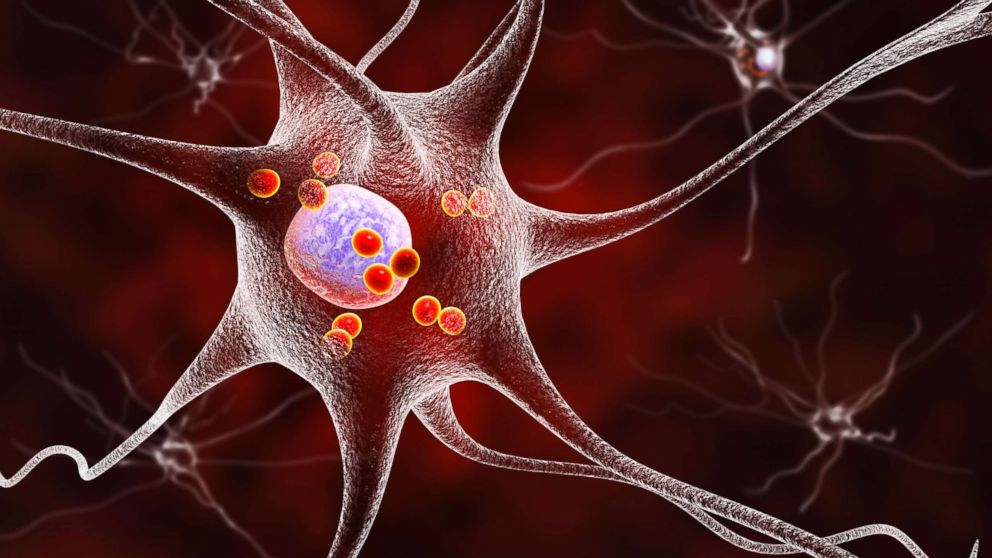Gene LRRK2 Involved In Causing Parkinson’s Identified with New Treatment Protocols On The Way
Source: University of Oxford May 04, 2019 5 years, 11 months, 3 weeks, 1 day, 14 hours, 28 minutes ago
The discovery of a new way to target and treat the leading genetic contributor to Parkinson's may open the way for a potential new clinical treatment.

Researchers from Oxford's Department of Physiology, Anatomy and Genetics (DPAG) have identified how the dysfunction of a key gene, LRRK2, causes the neurons affected in Parkinson's to lose their ability to effectively clear out cell components that have been damaged. This discovery has enabled the team to find a new way to target and correct this issue, paving the way for a potential new clinical treatment.
Parkinson's is a motor disorder caused by the loss of a specific sub-set of neurons located in the midbrain. Although the underlying mechanisms leading to the death of these neurons is still not well understood, one of the leading theories is that they die as they accumulate protein aggregates.
Evidence from recent years points to lysosomes, the cellular organelle in neurons responsible for clearing out waste, as a leading culprit for the progression of Parkinson's. The lysosomes do not work well enough in those with the condition, which causes damaged cell components to build up and clump together.
About 10% of Parkinson's is genetic, and lysosomes are implicated in the progression of both the inherited condition and in those with no family history of disease. Mutations in the gene LRRK2 are the most common genetic cause of Parkinson's, and these mutations have been heavily implicated in causing the lysosomes to stop working properly. However, researchers have been trying to ascertain exactly what LRRK2 does for some time and the mechanism by which LRRK2 regulates lysosomal function is still not clear.
In a new study, the Wade-Martins Group has identified for the first time both an important role of LRRK2 and a new way to target its dysfunction therapeutically. Lysosomes need to be acidic to work properly and effectively degrade the waste proteins, and the team's research demonstrates that LRRK2 regulates the way that lysosomes are acidic. In Parkinson's, the mutated LRRK2 is not able to perform this function, so lysosomes lose their acidity as a result of LRRK2 dysfunction.
They also found that a drug called clioquinol, currently used as an anti-parasitic drug, overcomes the effect of the mutant LRRK2 and restores the acidity of the lysosome and clears out the protein aggregates. Consequently, the team was able to restore the ability of the lysosomes to "chew up this pathological protein burden" (Prof Wade-Martins) and clear out the protein aggregates that are killing the neurons.
This data identifies a novel mechanism of LRRK2 mutations and ultimately demonstrates the importance of LRRK2 in lysosomal biology, as well as the critical role of the lysosome in Parkinson's.
Professor Richard Wade-Martins of Oxford's Department of Physiology, Anatomy and Genetics (DPAG), said: 'As the population in the United Kingdom gets older, we're all ageing, the incidence of Parkinson's is going to increase. We urgently need a better understanding of what causes the disease and then apply that knowledge to develop new therapies, and that is what our work has done. Our work identifies for the first time the very important role of LRRK2 in regulating the acidity and the normal function of the protein recycling centre, the lysosome, and identifies a new way to target this therapeutically in Parkinson's.'&l
t;br />
The successful use of clioquinol to reverse the effects of this mutation highlights the potential of drugs targeting the lysosome in future therapeutics of not only Parkinson's, but also other neurodegenerative diseases where lysosome dysfunction has been implicated.
Reference: : Rebecca Wallings et al. LRRK2 interacts with the vacuolar-type H+-ATPase pump a1 subunit to regulate lysosomal function, Human Molecular Genetics (2019). DOI: 10.1093/hmg/ddz088
